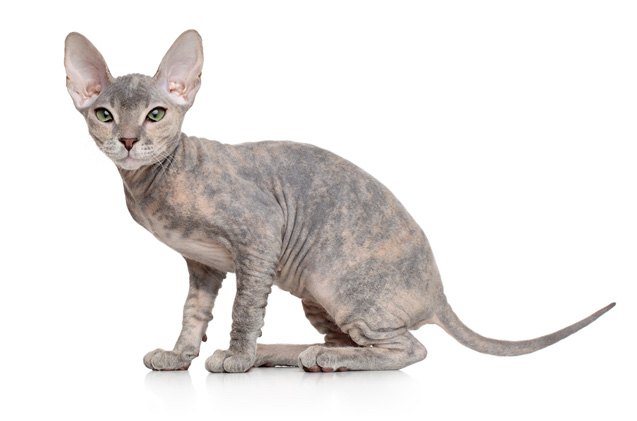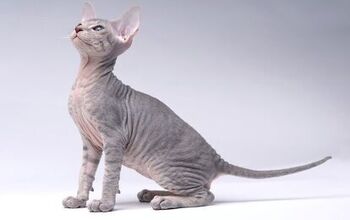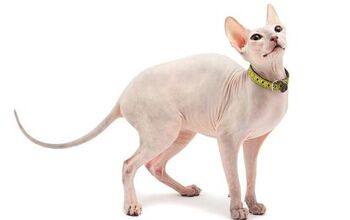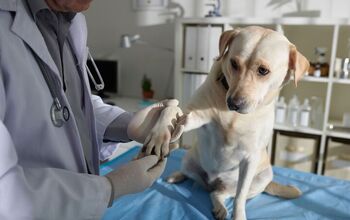Donskoy


About Donskoy
The Donskoy (also known as the Don Sphinx), is a truly unique feline breed that originated in 1987 near the Don River, which is found in southwest Russia. A woman had seen children abusing a kitten, so she stopped them and rescued the kitten by taking it home with her.
It became apparent pretty quickly that this kitty was unlike any other because it started shedding its fur. While the woman originally thought it was due to the stress that the cat had been through, it turned out that this was actually the way the cat was meant to be.
Later on, that kitten grew up and had babies of her own, and they were either born bald or with fur that soon fell out. At this point, local breeders realized that this was a newly evolved breed.
The Donskoy (also known as the Don Sphinx), is a truly unique feline breed.
The Donskoy is known for being a great family pet because it’s playful and active. It’s an inquisitive, social breed that’s very friendly, intelligent, and loving.
These cats are also gentle, making them easy to handle and groom, and they like having companionship, so they shouldn’t be kept as a single pet.
The Donskoy is a hairless cat breed. Some kittens are born bald, while others are born with fur and become bald over time.
These cats have soft, warm skin, but they do need to be protected from exposure to too much sunlight, and they’ll also benefit from additional warmth when the temperature drops in the winter.
Donskoy cats were initially referred to as Don Sphynx, but they’re actually quite different from the Sphynx breed. For example, this kitty features skin that’s elastic, and you’ll note that there are large wrinkles under the chin, cheeks, and jowls. The breed also features long, slim toes with webs of skin separating each toe, so it gives their feet a unique appearance.
Overall, these cats are medium sized, with plenty of muscle, and they’re strong-boned. They also have a distinctive pear-shaped, fat belly.
The coats are Velour, Rubber Bald, Brush, and Flock:
- Velour kittens are born with what’s referred to as a Monk’s cap, which is a bald spot on the top of their heads. They have a coat that feels like wool but becomes wiry and gradually disappears, usually within the first year. There may be some hair remaining on the legs, tail, and face, but these cats can lose their entire coat and become totally bald over time.
- Rubber Bald kittens are born bald and stay that way through life.
- Brush Donskoy cats will lose only a part of their fur over time. The fur can be soft, bristly, and wavy, though it’s often wiry in texture throughout the body, along with bald areas on the upper neck, back, or head.
- Finally, the Flock Donskoy cat will appear hairless and have the soft texture of chamois. The coat could fall out, leaving the kitty bald.
Donskoy cats can also develop a fine wool-like winter coat on the chest, as well as hairs on the end of the tail, but this fur will end up falling out once it gets warm again.
This breed comes in all colors.
Despite being hairless, the Donskoy requires regular grooming. The oil on this cat’s skin will accumulate, attracting a lot of dirt. A weekly bath is necessary, and you also have to focus on the nail beds, nose, and ears of a Donskoy, which can also attract dirt.
The Donskoy is also a breed that’s susceptible to gum disease and tooth decay, so regular oral hygiene is necessary. To protect the skin while outside, apply sunscreen.
Photo credit: Jagodka/Bigstock; Andrey_Kuzmin/Bigstock

Lisa Selvaggio is a freelance writer and editor, and our resident cats-pert, with certifications in pet nutrition and pet first aid. She enjoys producing content that helps people understand animals better so they can give their pets a safe and happy home.
More by Lisa Selvaggio

























